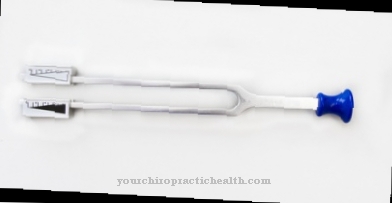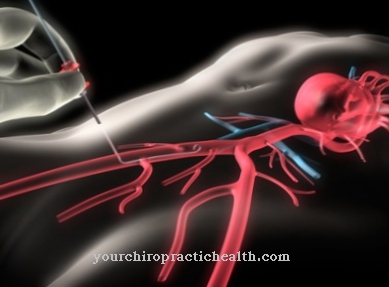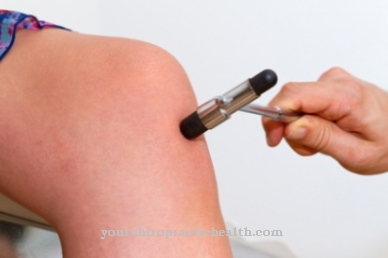A Running shoe supports the stability and damping of the rolling movement of the foot when running. It should act as a health protection and provide comfort. The running shoe is also worn in attractive designs as a casual, sporty leisure shoe.
What is a running shoe?

The running shoe is a needs-based sports shoe that is intended to ensure the most comfortable possible guidance and support of the foot, especially in the rolling phase.
The sports shoe is therefore manufactured to suit a wide variety of running disciplines and ground conditions. In particular, the sensitive heel area of the foot is protected by special padding and materials. In addition, various structural changes and additions to the running shoes compensate for foot misalignments (e.g. flat feet) or overweight.
Criteria when choosing the right running shoe are also the external framework conditions. These include weather conditions such as rain or snow. The nature of the soil also represents a load difference that needs to be compensated for. While a forest floor, for example, can act as a cushioning support, asphalt or concrete floors pose a problem for possible loads on joints and tendons. Running shoes should therefore be selected based on the occasion.
Special features of body weight, feet and the planned frequency of use must be taken into account. Running shoes can therefore be understood to mean competition shoes, jogging shoes, trail shoes or casual shoes.
Shapes, types & types
Different versions are offered as running shoes, which differ in shape, material, design and type. The basic standard of a running shoe should support the natural rolling movement during normal running behavior and be comfortable to wear.
In addition to the stability function, the weight of the running shoe also plays a role. Running shoes, which are primarily assigned to the lightweight category, are characterized by their very low weight and flat structure. Grippy outsoles and special toe boxes as well as a solid upper material and rain-resistant membranes are part of the equipment profile for the open terrain. Natural running running shoes ensure the most natural running sensation possible thanks to their light, flat, flexible and breathable product style. This guy comes closest to walking barefoot.
Leading manufacturers of running shoes, such as Nike, Asics, Adidas or Puma, use innovative technologies to produce numerous high-quality sports shoes for the huge running shoe market. The various running disciplines, ground conditions and personal requirements of the runners as well as the changing design requirements are taken into account.
Structure & functionality
The ankle and heel must be optimally protected when running when the foot touches the ground with about six times the body weight. The protective function of a running shoe comes into play in several ways. A support is embedded in the midsole on the inside of the shoe.
In addition to the support function at this point, the cushioning properties of the running shoe are intended to reduce the energy generated during impact. The manufacturers of branded shoes have developed different cushioning systems for this purpose. One technique is to use a silicone cushion placed in the center of the impact in the rear of the foot to reduce the severity of the impact. Silicone cushions with a higher elasticity in the front foot area have a supportive effect. An alternative to the same objective by another well-known running shoe manufacturer is the use of foam and gas-filled plastic covers. In addition, different gel versions are used by some manufacturers.
The material and shape of soles and midsoles should have a beneficial effect on surefootedness and optimal locomotion as well as durability and comfort. The outsole profile and the rubber compound used are adjusting screws for the quality of the outsole.
The weight range of the intended users determines the strength of the midsole. Individual requirements of the runner can make it necessary to replace the manufacturer's insole with an orthopedic insole. In the construction of natural running running shoes, the cushioning and stabilizing elements are neglected, depending on the type.
In view of the different designs of running shoes and different needs, professional advice should take place before buying running shoes. A treadmill analysis can be used as a selection aid to precisely determine your personal requirements.
Medical & health benefits
Running is an endurance sport with positive effects on health. Suitable running shoes are an important prerequisite for healthy running. First of all, the sports shoe has to fit. If the shoe is too big, this can lead to insufficient support. If shoes are chosen too small, they press uncomfortably on the foot. The wrong shoe size can also lead to blisters or problems with the Achilles tendon. As a rule, the running shoe should be half a size to a whole size larger than the normal shoe.
A lack of lateral support can cause the foot to tip over while running, causing pain in the knee. In extreme cases, the ankle can also twist painfully.
A lack of grip on the sole profile can, depending on the weather and ground conditions, lead to slips and falls. Shoes that are too worn out lose their protective functionality. If you train regularly, the running shoes should be replaced with new ones every year. At least two pairs of running shoes should ideally be available for constant use, because the shoes show deformations after running. It takes some time to return to its previous form. During this time, other running shoes can be used. The longer the running time, the more important it is to use running shoes correctly. If you start jogging slowly, you do not need a complete set of running shoes from the start.
If you defy wind and weather while running and are not afraid of heavy rain, you should get special running shoes with moisture protection. Insufficient cushioning and poor hold can lead to discomfort and damage to ligaments, tendons and joints. The knee joint is often affected. Meniscus damage is not uncommon, especially when there is insufficient cushioning and at the same time increased body weight. The hips are also often affected by the symptoms that occur.
If an ankle is already unstable, special protective measures must be taken by choosing special running shoes. Undetected foot misalignments or wrong running shoes can also cause heel spurs over a longer period of time. This means a painful inflammation of the thorny heel outgrowth. Orthopedic insoles for running shoes can counteract this problem.



.jpg)





.jpg)



.jpg)



.jpg)







.jpg)


